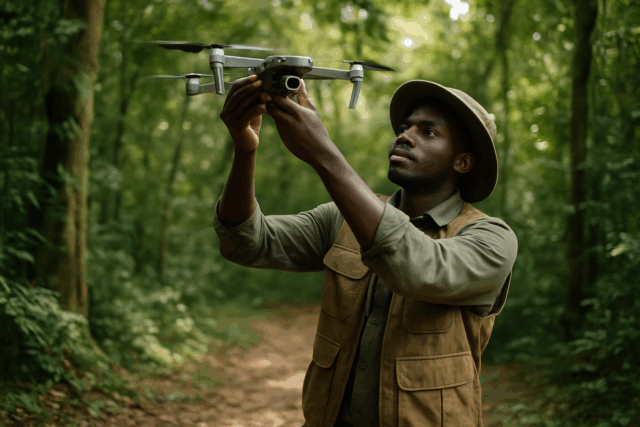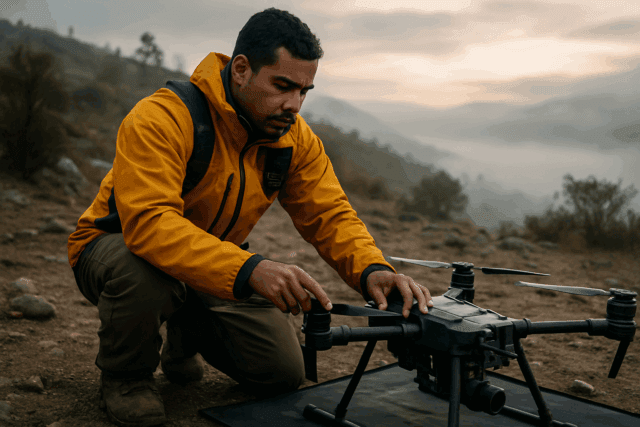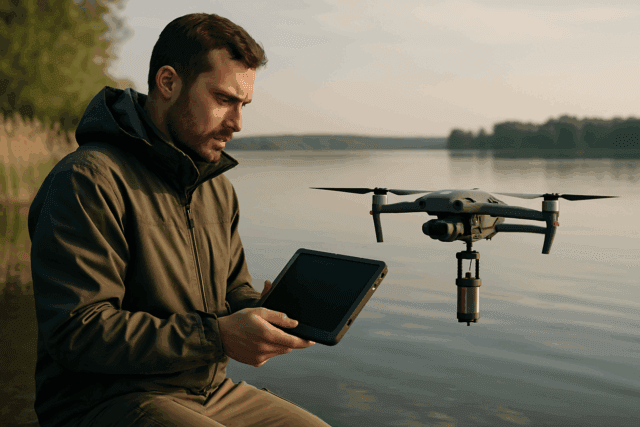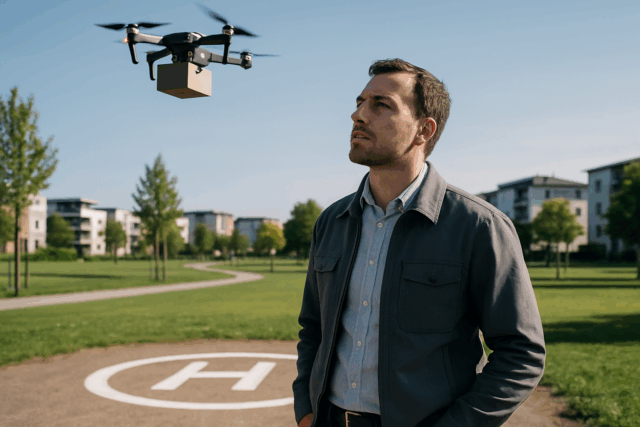Ecological surveys have long been essential for understanding, monitoring, and protecting our planet’s diverse ecosystems. However, traditional methods often face significant hurdles, including inaccessible terrain, high costs, and the potential to disturb sensitive wildlife. Enter drones, or Unmanned Aerial Vehicles (UAVs), which are rapidly transforming the field of ecological research and conservation by offering unparalleled capabilities for data collection, efficiency, and safety.
These versatile tools provide a bird’s-eye perspective over challenging landscapes, enabling scientists to gather comprehensive, high-resolution data that was previously unimaginable. From tracking endangered species to mapping intricate habitats and detecting invasive threats, drones are proving to be a game-changer in the ongoing efforts to preserve biodiversity and inform conservation strategies.
Enhanced Data Collection and Monitoring Efficiency
One of the primary benefits of integrating drones into ecological surveys is their ability to enhance data accuracy, collection, and overall monitoring efficiency. Drones can cover vast areas quickly, providing a level of precision and detail that often surpasses traditional ground-based surveys or even manned aircraft.
High-Resolution Imagery and Sensor Data
Equipped with cutting-edge cameras and high-functioning sensors, drones capture powerful imagery and data. This includes high-resolution RGB (Red, Green, Blue) cameras for visual imagery, multispectral and hyperspectral sensors to analyze vegetation health and composition, LiDAR (Light Detection and Ranging) for detailed 3D mapping, and thermal imaging cameras to detect heat signatures. This range of sensors allows for the collection of detailed insights into habitat conditions, wildlife populations, and environmental changes.
Accessing Inaccessible and Hazardous Terrains
Many vital ecosystems, such as dense forests, remote mountain ranges, or extensive wetlands, are often difficult or dangerous for humans to access. Drones can navigate these challenging environments with ease, collecting critical data without putting researchers at risk or disturbing sensitive wildlife. This capability significantly broadens the scope of ecological studies and allows for more complete environmental assessments.
Time and Cost Savings
Compared to traditional methods like satellite imagery or hiring helicopters, drones are generally more flexible, rapid, and cost-effective. They can accumulate massive chunks of data within a fraction of the time traditional methods would demand, and their operation costs are frequently significantly lower. This makes drone technology a desirable choice for both small-scale research projects and large-scale conservation initiatives.
Key Applications of Drones in Ecological Surveys
Drones are employed across a wide spectrum of ecological applications, providing valuable insights for conservation planning and management.
Wildlife Monitoring and Population Estimation
Drones have become an invaluable tool for tracking and counting wildlife populations with minimal disturbance.
- Counting and Tracking: Drones equipped with high-quality zoom lenses and thermal cameras can detect and count animals day and night, even those hidden in dense vegetation or burrowing underground. This allows for more accurate population estimations and tracking of animal movements and behavior.
- Anti-Poaching Efforts: In conjunction with AI, drones can enhance anti-poaching surveillance by distinguishing between animal movements and human activity, and even identifying poachers by analyzing their behavior. This provides real-time alerts and supports ground patrols.
- Non-Invasive Observation: By flying at height and using specialized cameras, drones can monitor wildlife without disturbing the animals, reducing the impact of human presence. This is particularly beneficial for sensitive or endangered species.
Habitat Mapping and Analysis
Accurate mapping of vegetation and land features is crucial for monitoring habitat health and changes.
- Vegetation Mapping: Drones can capture highly detailed, georeferenced imagery to support condition assessments and impact assessments of habitats. Multispectral cameras are especially useful for classifying vegetation and assessing its health.
- 3D Models and Terrain Analysis: Using technologies like GPS and LiDAR, drones can create detailed 3D maps and digital elevation models of ecosystems. This allows ecologists to assess the scale of habitat changes, monitor erosion, and even quantify biomass and carbon storage.
- Coastal and Aquatic Ecosystems: While aerial drones can provide some information on underwater benthic habitats, integrated approaches using Unmanned Surface Vehicles (USVs) alongside UAVs are proving effective for detailed mapping of shallow benthic communities. Drones can also be used to assess water quality by measuring parameters like temperature and pH.
Invasive Species Detection and Management
Early detection is key to effectively managing invasive species, and drones offer a powerful solution.
- Early Detection and Mapping: Drones with high-resolution and multispectral cameras can cover large areas, identifying and tracking the spread of invasive plants, animals, and pathogens in real time. This technology can even differentiate between invasive and native plant species based on spectral signatures.
- Precision Application: A significant advantage of drones is their ability to apply herbicides or biological agents with pinpoint accuracy to specific invasive plants, minimizing damage to native vegetation and reducing the overall chemical usage. This strategic approach enhances safety for personnel and reduces environmental impact.
- Tracking Invasive Animals: Drones equipped with thermal imaging can track and control invasive animal species like rats, feral pigs, or European red foxes by detecting their heat signatures, even at night. Radio-tracking technology on drones can simultaneously monitor multiple tagged invasive animals across challenging landscapes.
Challenges and Considerations
Despite their numerous advantages, the use of drones in ecological surveys comes with challenges that researchers and conservationists must address.
- Regulatory Complexities: Operating drones requires adherence to local aviation regulations and obtaining necessary permissions from authorities like the Civilian Aviation Authority.
- Technical Limitations: Drones often have limited battery life, typically ranging from 30 minutes to several hours, which can constrain surveys of expansive areas. Data processing for the exceptionally high spatial resolution imagery collected by drones can also be time-consuming and require significant computational resources and expertise.
- Environmental Factors: Challenging weather conditions and dense canopy habitats can affect drone operations and data quality.
- Data Management and Interpretation: While drones collect vast amounts of data, ensuring usable insights from this data requires specialized analytical skills and often relies on advanced techniques like AI and machine learning for efficient processing and interpretation.
The Future of Drone Ecology
The rapid advancements in drone technology, particularly in sensor capabilities and AI integration, continue to expand their potential in ecological research and conservation. As drones become more accessible and user-friendly, and as data processing techniques become more refined, they will undoubtedly play an even more critical role in helping us understand, monitor, and protect the natural world. The synergy between drones and AI is already reshaping wildlife monitoring, offering novel solutions for species identification, animal tracking, and habitat analysis, paving the way for more effective and efficient conservation strategies globally.





